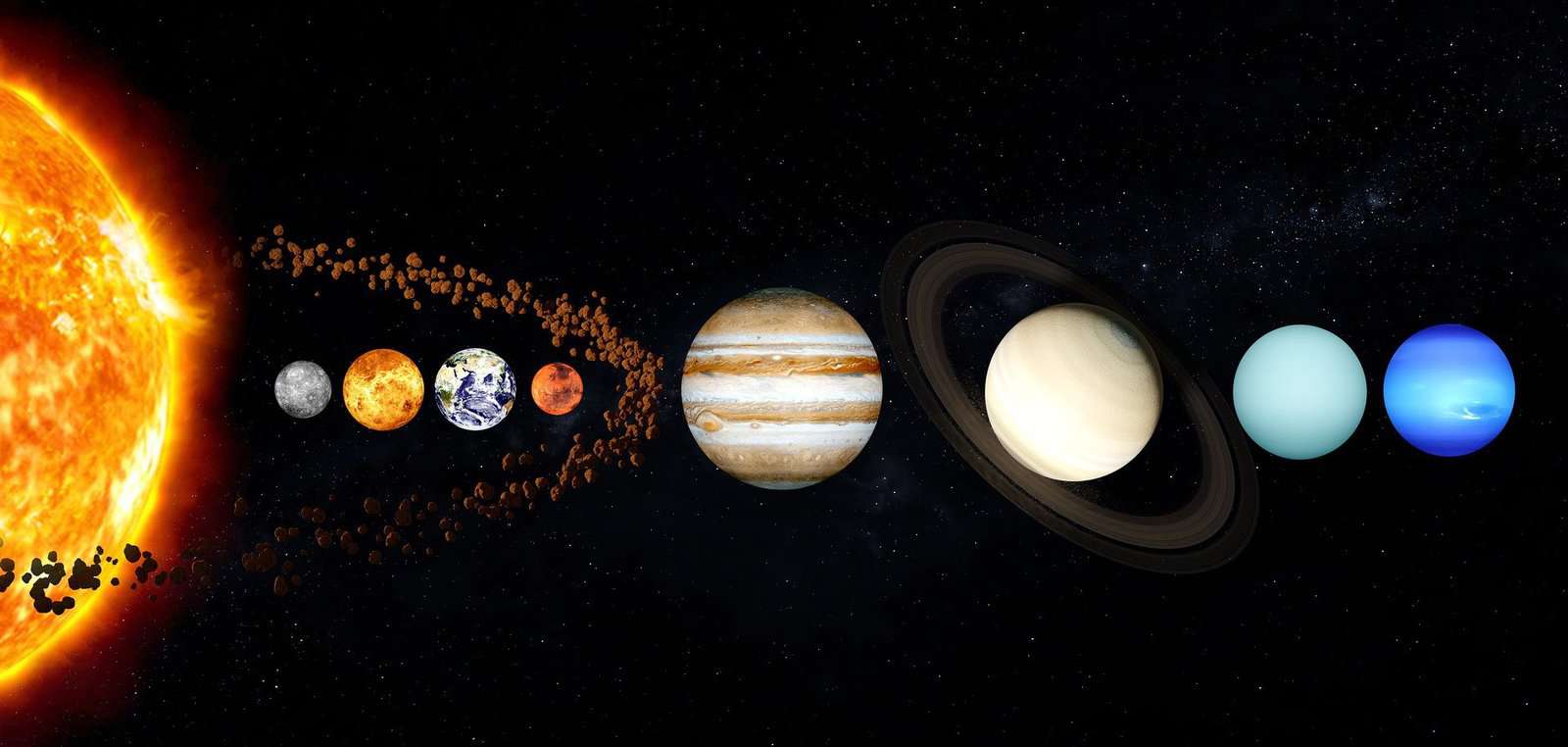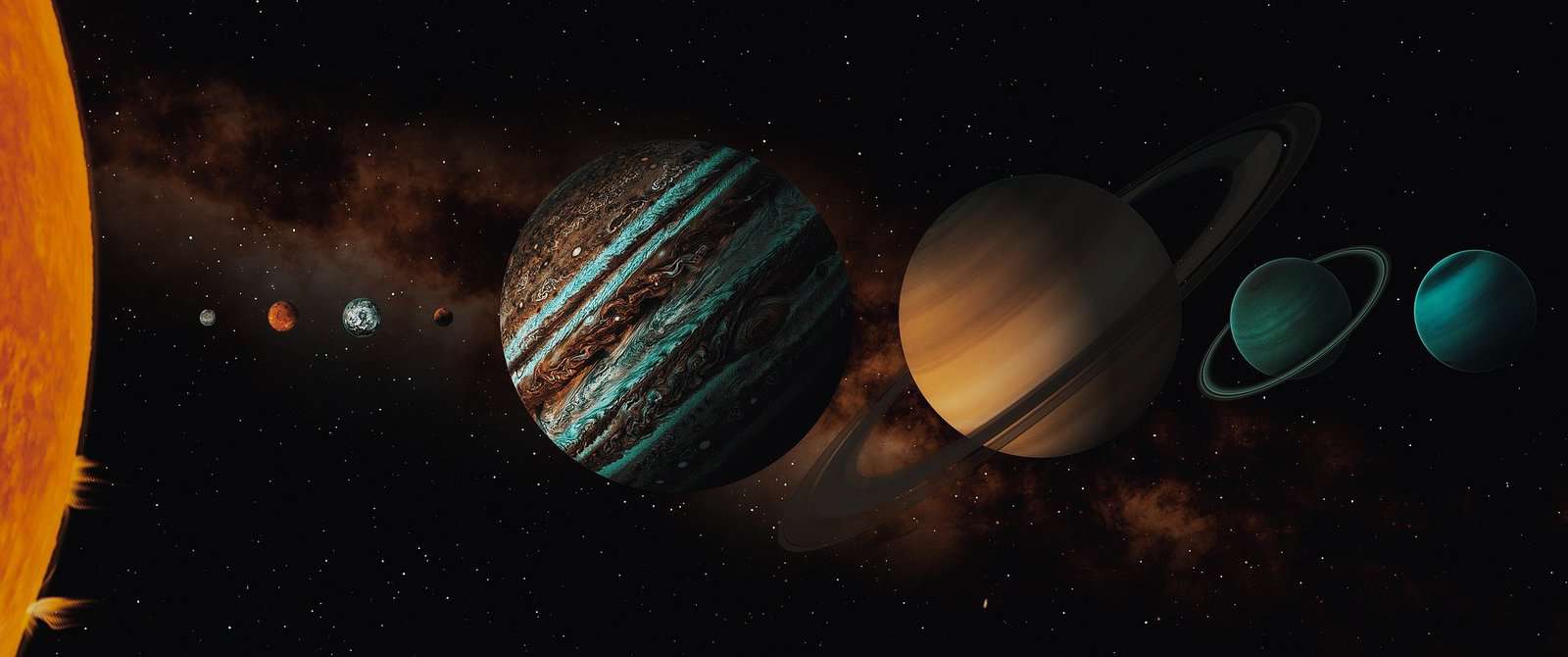
The Coldest Planet: Neptune! 10 Amazing Facts and More!
What is the coldest planet in the solar system? You may be confused between Uranus and Neptune, the most distant planets. Technically speaking, Neptune is the coldest planet in the solar system, but Uranus does reach the coldest temperatures of any other planet.
Introduction to Neptune
Neptune is one of the eight planets that orbit the Sun in our Solar System. It is the eighth, the last and the farthest planet from the Sun. The average distance between the Sun and Neptune is about 4.5 billion kilometres. Therefore, it is the coldest planet in the solar system. Neptune is one of the outer planets and the gas giants. It is the smallest planet among the gas giants, and it is the fourth largest planet in the Solar System. It shares so much in common with Uranus, so they both are called ice giants. Neptune is a dark, cold and stormy world. Let’s discover it in depth!

Surface and Structure
Neptune is one of the gas giant planets. This means that it is made up mostly of gases, and it does not have a solid surface. The main two gases that make up Neptune are hydrogen and helium. Around 80% of Neptune’s mass consists of dense, hot fluid of icy materials such as water, ammonia, and methane. Inside Neptune, there are two layers: the core and a mantle.
The core is small, and it is made up of rock. The mantle is hot and liquid, and it is made of water, ammonia, and methane. Scientists think that there might be a very hot ocean under the cold clouds of Neptune, and it does not boil away because the high pressure locks it inside.
Atmosphere and Temperature
Neptune has a thick atmosphere that is made of hydrogen, helium, and methane. The atmosphere of Neptune is very windy. Sometimes dark spots form in the atmosphere, which are actually huge storms. Neptune has the wildest and strangest weather out of all the planets in the Solar System. Some winds have been able to reach up to 2,160 km per hour. These winds are 5 times stronger than the strongest winds on Earth. The average temperature on Neptune’s surface is around -353 °F (-214 °C).

Size
Neptune’s diameter is about 50,000 kilometres. This is about four times larger than Earth’s diameter. Neptune is nearly as big as its neighbour, Uranus. The diameter of Saturn is 2.3 times the diameter of Neptune. The largest planet in the Solar System, Jupiter, has 2.8 times Neptune’s diameter. Neptune is nearly four times larger than Earth and Venus. It has 7.2 times the diameter of Mars, and more than 10 times the diameter of Mercury, the smallest planet in the Solar System.

Orbit and Rotation
Like all planets, Neptune has two types of motion: orbit around the Sun, and spin about its centre. Neptune’s journey around the Sun takes so much time because it is so far away from the Sun. It takes Neptune about 165 Earth years to complete only one orbit around the Sun. So, a year on Neptune is about 165 Earth years.
On the other hand, Neptune spins about its centre quickly. In fact, it has the third shortest day of any planet in the solar system. A day on Neptune is actually shorter than a day on Earth. Neptune completes one rotation, or spin, in about 16 hours. So, a day on Neptune is equal to about 16 hours.
Moons
There are 14 moons around Neptune. The largest moon is Triton. It is nearly the same size as Earth’s moon, and it is bigger than the dwarf planet Pluto. It is shaped like a sphere, and it has a rotation that is opposite that of Neptune. Scientists believe that Triton was actually a dwarf planet, but the gravity of Neptune had pulled it into its orbit. Triton is the seventh largest moon in the Solar System.
Rings
Like the other three gas giants, Neptune has a ring system. There are six narrow rings that surround Neptune, but they are faint. They are not as large as the rings of Saturn. The rings are mostly made up of dust.

Name
Planet Neptune is named after the Roman god of the sea. In Greek mythology, he was known as Poseidon. Neptune was given the name of the Roman god of the sea because of its blue colour. In addition, all of Neptune’s moons have been named after water deities.
Discovery and Exploration
Although Neptune is a huge planet, it is so far away that people on Earth cannot see it without a telescope. So, it remained undiscovered for centuries. In 1846, Urbain Le Verrier, John Couch Adams, and Johann Galle discovered Neptune by mathematical predictions. Astronomers were calculating the orbit of Uranus and observed that the planet was not matching their calculations. So, they suggested that there is another planet behind Uranus that causes the disruption.
Astronomer Le Verrier predicted the place of that planet, and Johann Galle found it one degree away from that predicted point. So, Neptune became the first planet to be discovered by mathematical calculations and predictions.
In 1989, NASA’s Voyager 2 spacecraft flew by Neptune and studied it closely. This was over 140 years after Le Verrier’s predictions about Neptune. Voyager 2 is the first and the only spacecraft to visit Neptune. It provided us with much information about the planet and its moons. It also confirmed that Neptune had faint rings like other gas giant planets.
10 Interesting Facts about Neptune
- Both Neptune and Uranus share similar compositions, and they differ from the other gas giants: Jupiter and Saturn. Because of this, Neptune and Uranus are classified as ice giants rather than gas giants.
- Neptune is very similar to Uranus in terms of size, mass, composition and rotation. So, they are referred to as twin planets.
- Neptune is the only planet that is not visible to the naked eye from Earth. You can see it only with instruments such as telescopes.
- Neptune is the last and most distant planet from the Sun, so it has only one neighbour, which is Uranus.
- Although Neptune is the farthest planet from the Sun, Uranus sometimes reaches temperatures that are colder than Neptune’s temperatures.
- In 1613, Galileo Galilei observed Neptune, but he thought that he observed a star and failed to find it again.
- Even though Neptune is a gas giant, it has the second largest gravity of all other planets in the solar system after Jupiter.
- If you weigh 100 pounds (45 kilograms) on Earth, you would weigh 114 pounds (52 kilograms) on Neptune.
- The space journey from Earth to Neptune takes about 12 years.
- Neptune’s moon Triton is the coldest known object in our solar system. Its surface temperature can dip down to -235° C. It has an extremely thin atmosphere.
You can learn more and see pictures on NASA’s website. Click here!


Leave a Reply